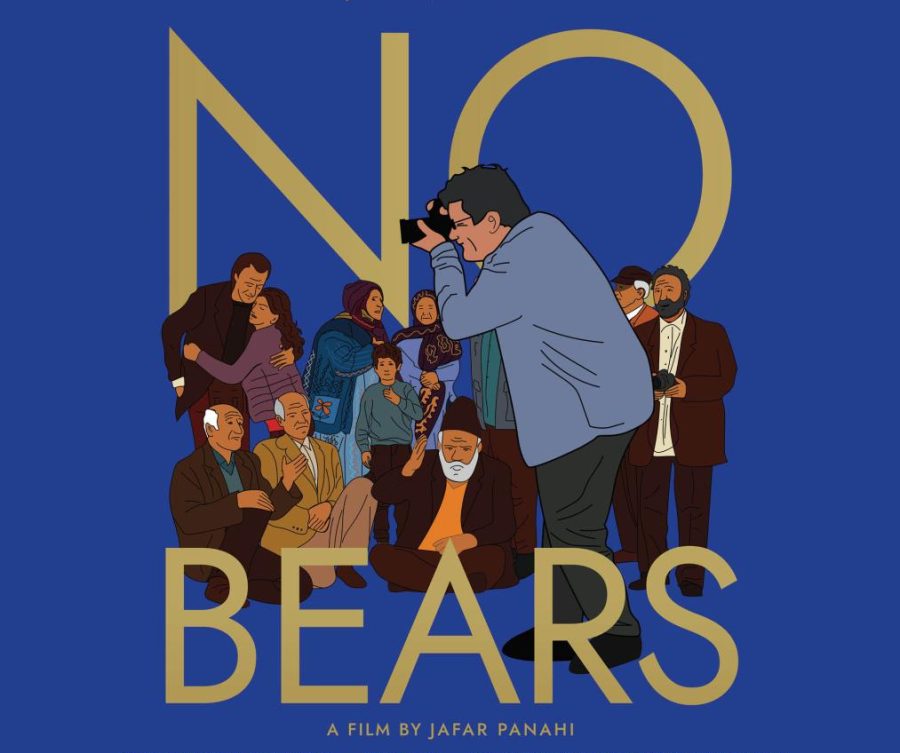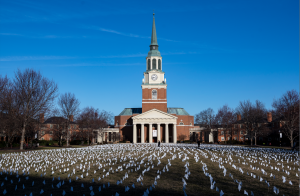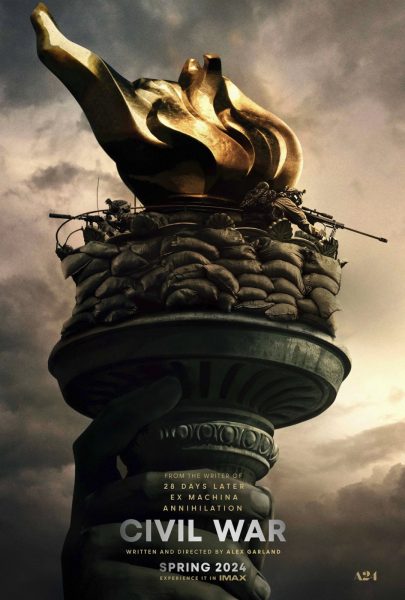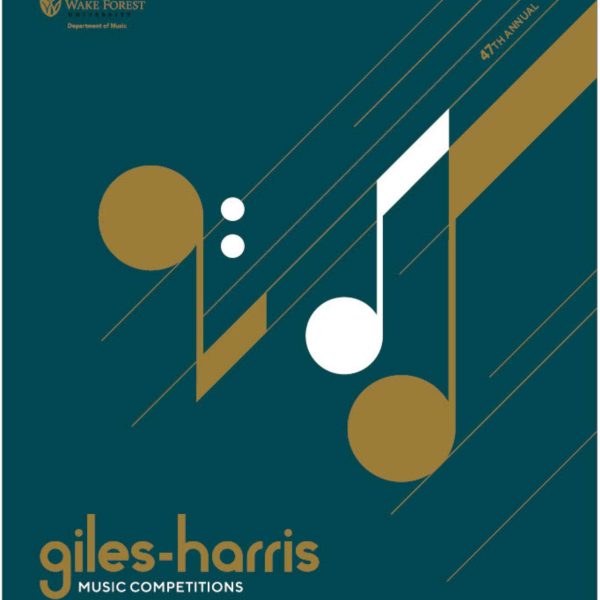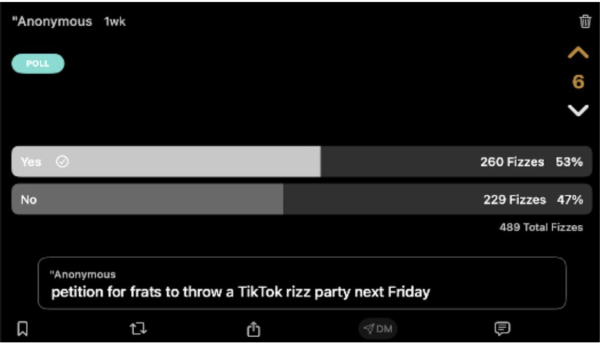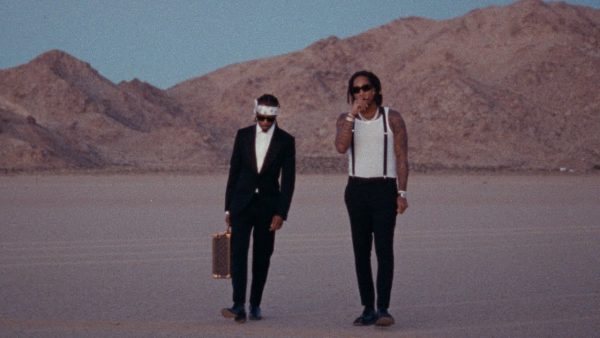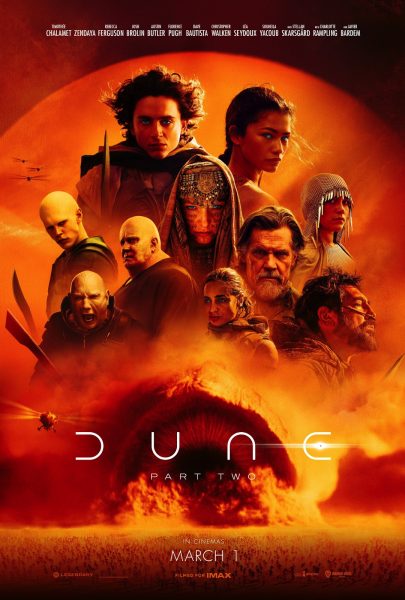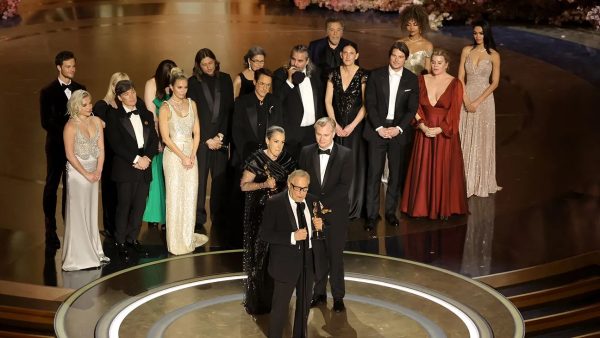‘No Bears’ should have been nominated
While (sadly) bear-less, the film is a triumph of artistic protest
“[‘No Bears’] is one of the most remarkable, creative and innovative films in recent memory, and it deserves to be treated as such,” writes Life Editor James Watson.
March 15, 2023
Bears are so hot right now. The titular bear from “Cocaine Bear,” Paddington Bear, the bear from “Annihilation” and the bear from “The Revenant” represent some of the industry’s hottest mammals. The fact is, bears are in — which is why it was unnerving when persecuted Iranian filmmaker Jafar Panahi entitled his latest film “No Bears,” all but confirming this to be a bonafide bearless feature. How could any filmmaker in 2023 have a bearless production and still expect to make a return on investment? Not to mention the vast bear market which might feel excluded by such a title. Skeptical, I came into “No Bears” expecting the worst, but instead, I left with a renewed excitement for the medium. Despite the notable absence of North American grizzlies, “No Bears” was a triumph of artistic protest and a breath of fresh air for filmmaking.
Firstly, “No Bears” should not exist. I say this not out of malice, but rather because, for more than a decade, Pahani has been barred from making movies by the Iranian government. The production of Bears was done entirely in secret. In fact, he was arrested and jailed as recently as July 2022.
The mere act of watching it in a theater was, frankly, a miracle. In the past, Pahani famously had to get creative in order to get his films shown (a popular anecdote recalls the time a flash drive with his film’s file was smuggled out of the country in a cake). This contextualizes the critical stakes of “No Bears” — why its creation is so miraculous, and why its voice could not be more urgent.
The film follows Pahani himself directing a feature film while exiled on the border of Iran and Turkey. The plot is not too dissimilar from reality, as the film itself was obviously made under the guise of secrecy. Pahani quickly stumbles into trouble as he photographs a soon-to-be wife with another man. The town’s leaders then embark on an interrogatory mission to accuse and silence Pahani. But this reasonably simple conflict has drastic implications for both Iran and filmmaking itself.
This directorial meta-ness recalls a similar filmic excursion by Frederico Felini, who poured his creative anxieties into an analogous vessel in “8 ½.” The best art is channeled through introspection, and self-reflexive films about “process” often represent the highest form of medium-pushing art. But in 2022, “No Bears” is not peerless in this regard. Steven Spielberg released the quasi-Freudian, career-defining “The Fablemans” — achieving similarly revelatory notions about the act of filmmaking.
Spielberg may be far more romantic with his use of the camera, but Pahani reveals a somewhat darker aspect of filmmaking. Pahani demonstrates the incomparable power of the camera. The simple, innocent act of photography in which Pahani engages nearly rips the town apart. The gaze of the camera can drastically alter and shape reality. Images can be shaped and weaponized to suit destructive, political agendas. Pahani profoundly asserts that filmmaking itself is a defiant political act. Where Spielberg reveals that, for him, filmmaking came about as a means of controlling his deepest anxieties and sadnesses, Pahani makes the case that filmmaking is his survival. Both features act with similar urgency and carry similarly apocalyptic stakes — albeit one is familial, and the other is political.
Thematically, Pahani centers the film on a distinct tension between modernity and tradition. A mirrorless camera appears to be as destructive to the social order of the small village of Joban as, say, a small insurgency. It’s this same tension that also underpins much of the sociopolitical violence occurring in modern Iran. In scaling down this conflict into one village, making it personal, “No Bears” reveals its brilliance. “No Bears” is not just a commentary on filmmaking itself, but a much larger protest about Pahani’s persecution and the struggle of Iranians to free themselves from the orthodox tyranny causing so much strife and violence.
As much as I regularly loathe film critic Richard Brody, I can’t deny that his frustration is correctly placed at the Academy for not nominating “No Bears” for anything, let alone best international picture. This is one of the most remarkable, creative and innovative films in recent memory, and it deserves to be treated as such. Hopefully, cinematic history will reserve a coveted spot for it.
So while “No Bears” is (sadly) bearless, it remains some of the most cutting-edge filmmaking from an artist who has everything to lose and everything to prove.


